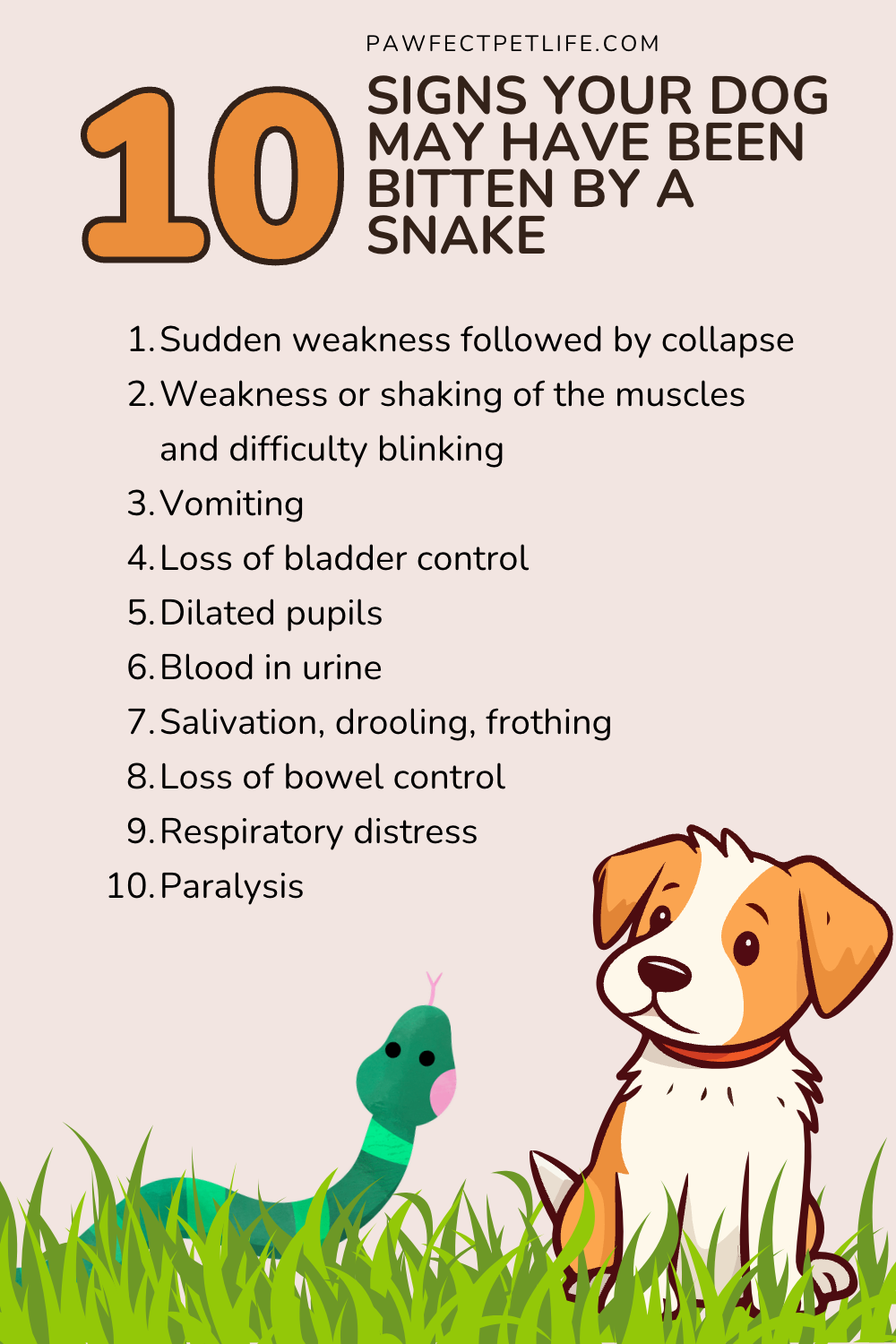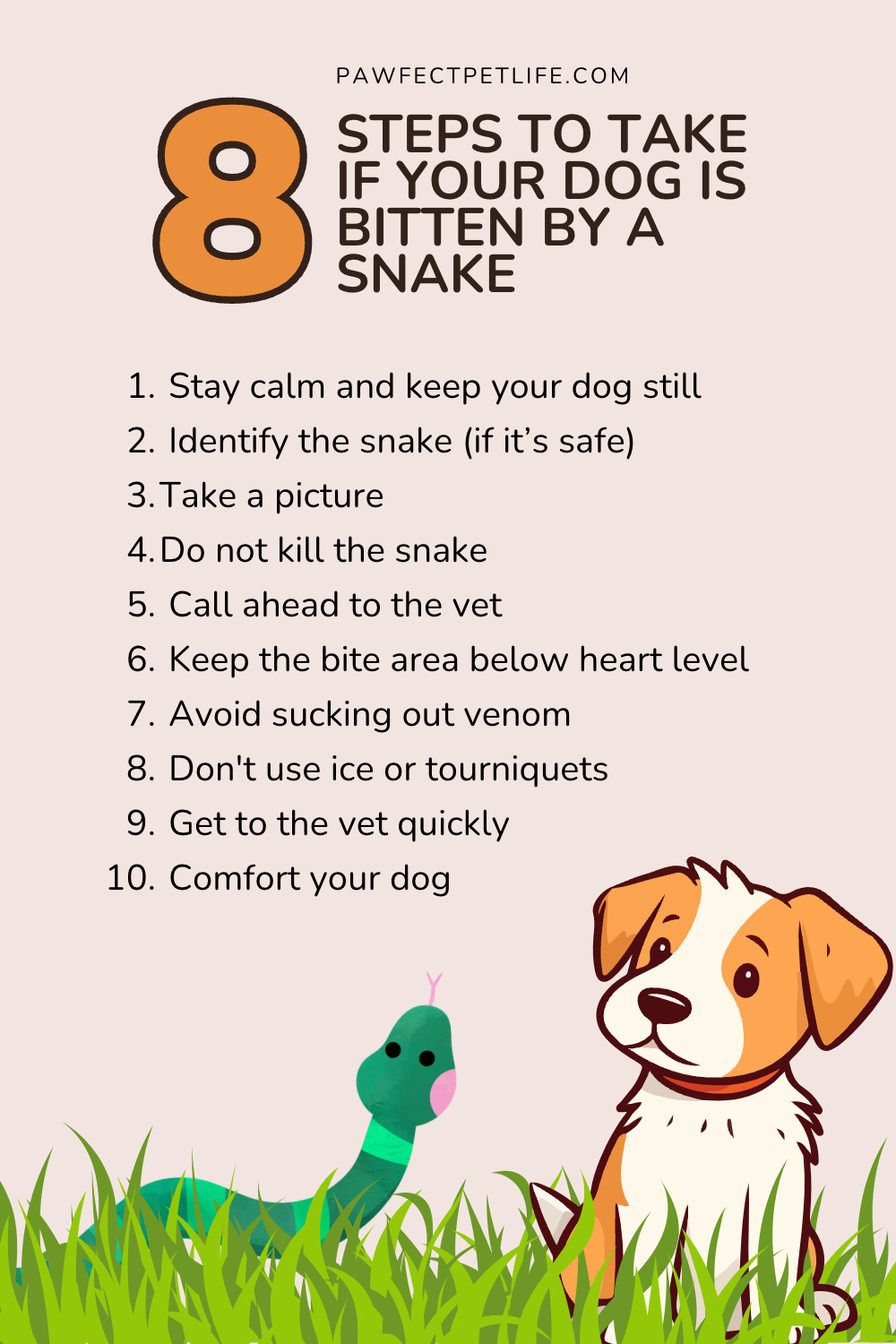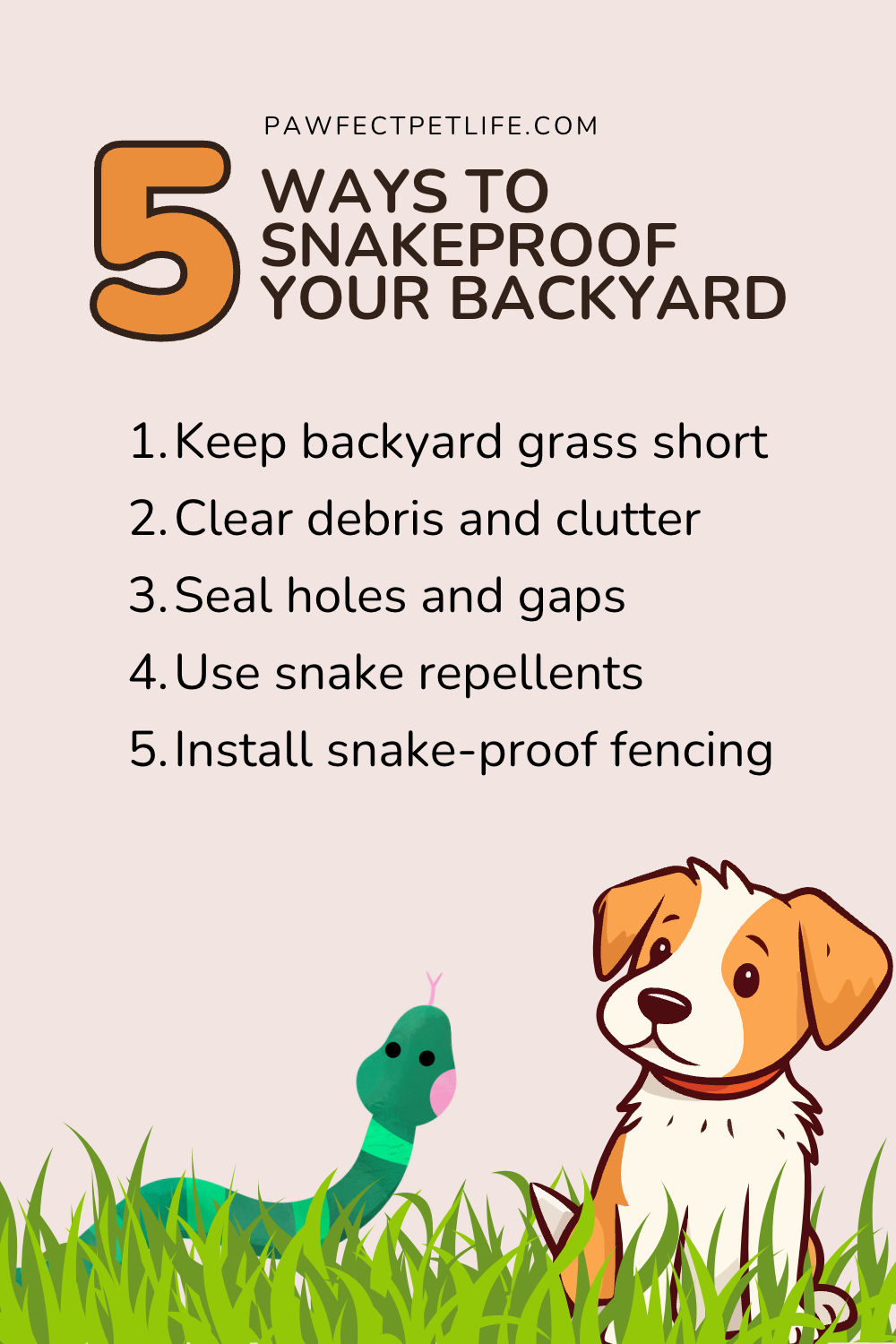The content on this site may include affiliate links. As an Amazon Associate I earn from qualifying purchases. This means that, at zero cost to you, we will earn an affiliate commission if you click on one of the links and buy something.
🐍🐶Worried your dog might have been bitten by a snake? Discover the 10 surprising signs to watch for! Learn what to do if the unthinkable happens and get pro tips on snake-proofing your yard. 🏡✨

Did you know that snakebites are a real danger for our beloved fur babies, especially during those warm, adventurous months? 🐾 Whether you’re chilling in the backyard or exploring the great outdoors, it’s super important to be snake-savvy. Knowing how to recognize the signs of a snakebite and taking steps to keep your pup safe can make all the difference.
In this post, we’ll dive into:
- The 10 signs your dog may have been bitten by a snake (hint: some might surprise you!)
- What to do if the unthinkable happens and your dog gets bitten
- Pro tips on how to snake-proof your yard and stay safe while out and about
Let’s ensure our furry friends stay safe and sound. Read on to become a snakebite-savvy pet parent! 🐕❤️🦴
10 Signs Your Dog May Have Been Bitten by a Snake

Knowing how to spot the signs of a snake bite can be life-saving for your furry friend. Here are the top 10 signs your dog may have been bitten by a snake, with a bit more detail to help you identify them:
1. Sudden Weakness Followed by Collapse
- This is often one of the first signs. Your dog might suddenly seem weak, unsteady, and may collapse. Keep a close eye if your normally energetic pup starts acting lethargic or struggles to stand.
2. Weakness or Shaking of the Muscles and Difficulty Blinking
- Look for muscle tremors or your dog struggling to control its movements. Difficulty blinking and other facial muscle issues can also be a sign, indicating that the venom is affecting the nervous system.
3. Vomiting
- If your dog starts vomiting unexpectedly, it could be a reaction to the venom. This symptom can appear quickly after the bite.
4. Loss of Bladder Control
- Involuntary urination or an inability to hold their bladder is another sign. This can be due to the venom affecting the dog’s nervous system.
5. Dilated Pupils
- Check your dog’s eyes. If their pupils are unusually large and not reacting to light, it might be a sign of a snake bite.
6. Blood in Urine
- Blood in the urine is a serious sign that indicates internal bleeding, often due to the venom’s effect on the blood vessels and organs.
7. Salivation, Drooling, Frothing
- Excessive drooling, salivation, or frothing at the mouth can be signs of a snake bite. This is often due to the venom affecting the salivary glands and oral tissues.
8. Loss of Bowel Control
- Just like with bladder control, a sudden loss of bowel control can indicate that the venom is impacting the nervous system.
9. Respiratory Distress
- Difficulty breathing, rapid or shallow breaths, and other signs of respiratory distress can be critical indicators. The venom can affect the muscles involved in breathing, leading to serious complications.
10. Paralysis
- In severe cases, your dog might experience paralysis. This can start in one area of the body and spread, making it difficult for your dog to move or respond.
Key Takeaway:
If you notice any combination of these signs, it’s crucial to act fast. Snake bites can escalate quickly, and immediate veterinary care is essential. Keep an eye on your dog’s behavior and physical symptoms, and don’t hesitate to contact your vet if you suspect a snake bite. Quick action can save your dog’s life! 🐾❤️
What to Do If Your Dog Is Bitten by a Snake

Here’s what to do if your dog has a not-so-friendly encounter with a snake:
1. Stay Calm and Keep Your Pup Still
- We know, easier said than done! But staying calm helps your dog stay calm too. Try to keep your dog as still as possible to slow the spread of venom.
2. Identify the Snake (If You Can)
- Don’t risk another bite, but if it’s safe, take a quick look or snap a pic. This can help the vet identify the type of venom. Do not kill the snake.
3. Call Ahead to the Vet
- Call your vet or the nearest animal hospital to let them know you’re coming. Mention it’s a snake bite so they can prep the anti-venom.
4. Keep the Bite Area Below Heart Level
- If possible, try to keep the bitten area below your dog’s heart. This can help slow the spread of venom.
5. No Sucking the Venom Out!
- Leave the cowboy tricks to the movies. Focus on getting to the vet ASAP instead.
6. Avoid Ice or Tourniquets
- Ice and tourniquets can do more harm than good. Stick to the basics and get professional help.
7. Get to the Vet – Pronto!
- Time is critical. The quicker your dog gets anti-venom, the better their chances. Speed is everything!
8. Stay Calm and Comfort Your Dog
- Reassure your pup with gentle words and pats. Your calm presence can make a big difference.
Reducing the Risk: Keeping Your Dog Safe from Snakes at Home and On the Go
Nobody wants their playful pup to have a run-in with a sneaky snake. Luckily, there are some simple steps you can take to reduce the risk of snake bites, both in your own backyard and when you’re out exploring the great outdoors. Let’s dive in!
At Home: Snake-Proofing Your Backyard

Your backyard should be a safe haven for your fur babies, so let’s make it as snake-free as possible:
1. Keep the Grass Short
- Snakes love hiding in tall grass, so keep it trimmed and tidy.
2. Clear the Clutter
- Remove any debris, piles of leaves, or wood where snakes might hide. A clean yard is a safer yard!
3. Seal Up Holes and Gaps
- Check for gaps under fences, decks, and sheds where snakes could slither in. Seal them up to keep unwanted visitors out.
4. Use Snake Repellents
- There are various natural snake repellents available. Consider using them around the perimeter of your yard.
5. Install Snake-Proof Fencing
- If you live in a snake-prone area, investing in snake-proof fencing can provide an extra layer of protection.
When You’re Out and About: Safe Adventures with Your Pup

Exploring nature is one of the best things you can do with your dog, but stay snake-savvy with these tips:
1. Stick to Well-Worn Paths
- Stay on clear trails and avoid tall grass, bushes, and rocky areas where snakes might hide.
2. Keep Your Dog on a Leash
- A leash gives you control and helps prevent your dog from wandering into snake territory.
3. Stay Alert and Aware
- Keep an eye on your surroundings. Look out for signs warning about snakes and keep your dog close.
4. Make Noise
- Snakes aren’t fans of loud noises. Stomping and talking can help alert them to your presence so they slither away.
5. Avoid Snake-Prone Times
- Snakes are more active during early morning and late evening. Plan your walks and hikes accordingly.
By following these tips, you can help ensure that your adventures with your dog are safe and snake-free. Happy exploring, and stay safe out there, pet parents! 🐶🌳
👇🏻 If you found this post useful please share it with your friends 🐶
